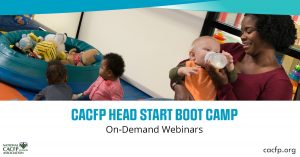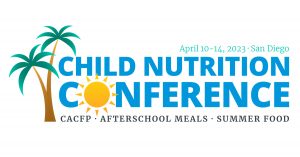Specialty 1
Exploring Fall Foods: Recipes & More! ($)
The cool, crisp breeze means it’s time for the fall harvest! Learn about five fabulous fruits and vegetables that are ready to be purchased from your local farmer or grocery store. Get recipe ideas on how to incorporate these fall favorites into your menu and learn how to provide nutrition education related to them through engaging activities.
Read MoreA Change of Taste: Reducing Sodium in the CACFP ($)
Sodium plays an essential role in our body but consuming too much can cause us harm over time. In the CACFP, it is recommended to serve foods low in sodium. Learn about the the impacts of sodium and how to reduce sodium while still retaining flavor in the meals you serve.
Read MoreUnderstanding Meal Modifications in the CACFP ($)
Have you ever received a parent’s or doctor’s note describing a meal modification or substitution to serve a child in your care? Maybe you
have felt confused or overwhelmed on how to modify the menu to ensure foods are safe to serve to a participant with a disability. Learn about the requirements for having a medical statement to serve safe and reimbursable foods in the CACFP. Identify creditable and non-creditable milk substitutions in the CACFP and understand the documentation needed. Gain valuable knowledge on tailoring foods for special diets, including vegetarian, pureed, and gluten-free diets. Empower yourself with the information and guidance to confidently address meal modifications and provide suitable options for participants with specific dietary needs in the CACFP at your Head Start site.
Celebrate Hispanic Heritage Month in the CACFP ($)
National Hispanic Heritage Month, recognized September 15th – October 15th, is a wonderful time to learn more about the rich history and diversity of the Hispanic and Latino communities. Come celebrate with us as we explore various cultural foods and introduce fun activities that you can bring back to those in your care.
Read MoreBuilding Healthy Bodies with the Foods We Serve ($)
In your career, you play a critical role to ensure that all children have access to healthy foods. Those foods are vital to providing the nutrients kids need as they grow, and into adulthood. Most of us know about macronutrients (carbs, proteins, and fats) and micronutrients (vitamins and minerals) but do you know in which foods they can be found and how they work in the body? Learn what fruits, vegetables, grains, meats/meat alternates and fluid milk contribute so you can put nutrients together for optimal health when building a menu. Get examples and a visual handout showing what food components do for the body.
Read MoreExplore New Foods with a Taste Testing Adventure ($)
The CACFP fosters a positive eating environment that encourages healthy eating habits. Children will develop their own unique palates based on the foods they are exposed to while in your care, which may affect their food choices later on as adults. Learn how you can introduce new or challenging foods through various taste testing strategies, promote conversations around meals, and discover other food tasting adventure tips!
Read MorePromoting Responsive Feeding Practices in Early Childhood Settings ($)
Responsive feeding is an attentive way of feeding young children that includes watching for their hunger and satiety cues. This session will define the characteristics of responsive feeding as well as the impact and benefits on children’s physical and social emotional well-being. Participants will be provided with strategies and resources to help them engage in responsive feeding with children.
Read MoreUnderstanding Grain-Based Desserts ($)
Wondering why savory biscotti, rice pudding, and scones are creditable in the CACFP, but the same items made with fruits are considered to be sweet and are not allowed for reimbursement under the meal pattern? Grain-based desserts are a category of food items that are considered sweet and high in sugar. By eliminating grain-based desserts in the CACFP, USDA hopes to reduce the amount of added sugars kids eat in child care. While brownies clearly fall in the grain-based desserts category, other food items can be tricky. Learn how to determine what is creditable and what is not based on the USDA guidance.
Read MoreGardening Activities for Every Classroom ($)
Ready to grow? Explore the many benefits of gardening with the children in your care. Learn about indoor and outdoor gardening activities to try in your classrooms. A love of gardening and dirt are not required.
Read MoreBody Positivity and Cultivating Good Relationships with Food
Our relationship with food develops at an early age. Labeling certain foods as “bad” or calling someone a “good eater” or “picky eater” can create unintended harmful effects that can follow kids through life. Learn how to help kids cultivate a good relationship with food from the start.
Read More



